- Policy
- Posted
The wind industry

It is estimated that by 2008 to 2012 punitive fines of €1-4 billion per year will hit the Irish economy as a result of our failure to meet targets agreed under the Kyoto protocol (1997). It is a fact that Ireland persists in being the most dependent country in the EU on imported, environmentally damaging, fast depleting fossil fuels – and that this dependency is a major factor inhibiting our ability to reach these targets.
Furthermore, it is commonly accepted that Ireland has the best wind regime in the EU, which could, if properly harnessed, provide energy both for our own use and for export, potentially converting Kyoto fines into a great national asset.
In light of the failure of AER 5 and the widespread pessimism in the wind industry regarding converting AER 6 contracts into operating wind farms, we asked the six main political parties what their proposals are for the development of an Irish wind industry.

Fianna Fáil in Government has placed renewable energy at the top of the energy agenda. Whilst other parties will roll out generalities supporting the renewable sector.
Only Fianna Fáil has delivered on the specifics.
The Opposition will not provide credible policies, costing or details. They will not deal with the complexities of the electricity grid, interconnections, spinning reserve or planning.
Opposition Party’s will always assert, for example, that Germany and Denmark have less wind than Ireland but far more wind energy on their system. They will never deal with the facts that while the Danish and German grids are highly interconnected, ours is not. They will not ignore the fact that, in Government, they failed to upgrade the grid in order to accept more wind energy.
The empirical fact is this – Fianna Fail has delivered more megawatts of wind onto the grid and will continue to do so.
Under AER VI, I have sanctioned an additional 578 MWs to be built by the end of 2005. On top of existing green power levels this will :
Generate power for 500,000 homes.
Prevent the emission of over 2 million tonnes of polluting greenhouse gases annually.
Cut emissions by one-fifth of our obligations under the Kyoto agreement.
Reduce our dependency on imported fossil fuels by more than 4 million barrels of oil (7 oil tanker shiploads) every year.
Improve Ireland's national trade balance by 110 million annually by redirecting money previously spent on energy imports back into the local Irish economy.
Create 350 new secure long-term jobs in renewable energy equipment operation & maintenance and 1,600 full time construction jobs over the two year building phase.
Most of the new energy will come from onshore wind projects but, for the first time, 50 MWs will be generated offshore in what is seen as a major new initiative, reflecting the Fianna Fail manifesto commitment of offshore wind. Other green energy generators under the scheme are landfill gas, small-scale hydro power plants, anaerobic digestion plants and biomass steam cycle CHP.
In order to ensure that the these projects are actually built I have ensure that a number of measures were included in this AER round these include;
Indexation (CPI) at 100% will be allowed on the bid price in each case.
Introduction of a mechanism to allow front-loaded payments in the early years of the contract.
In addition, to facilitate speedy construction of the energy plants the current programme also addresses the impediments notified by industry representatives. These are:
applications were confined to projects with planning permission
previous project size cap was withdrawn
Projects successful in the previous round were allowed to re-enter.
Sales and full indexation was guaranteed for fifteen years
Developers are allowed opt for an accelerated payment in the early years.
The results of AER VI aroused criticism in certain quarters, despite the fact that those who criticised the policy were also on the Strategy Group which advised me to proceed with the AER policy!
My primary concern is getting as much wind energy onto the grid as possible. To that end I have decided to go further that the Green Paper and IWEA wind energy targets for 2005.
Based on the most authoritive Report on the grid’s ability to take Wind Energy – the Garrad Hassan Report - I believe the grid can safely take about 800 MW of wind by 2005.
On this basis I have decided to go further than the Green Paper, and the IWEA target of 626 MW of wind by 2005.
I am aiming for 800 MW of wind in 2005. I have already instructed my officials to approach the European Commission to seek clearance for this amount.
Shortly I will be launching a Policy Document on future Renewable Policy. I have always felt that the stop-go nature of the AER mechanisms can be improved on. I also feel that other mechanisms can provide improved investment conditions.
I look forward to engaging with industry, the regulator and the general public in framing the policy to deliver us far beyond the EU Directive goal of 13.2%.
- Dermot Ahern

Renewable Energy – Time to make it happen
The debate on renewable energy in Ireland is no longer solely an environmental one. Ireland’s international obligations within the EU on greenhouse gas emission, the advancement of technology and Ireland’s natural competitive advantages means that the development of renewable energy is now an economic, social and environmental mainstream debate.
It is a fact that unless Ireland can meet its commitments on carbon emissions the Irish economy will face significant fines/levies within the EU. Renewable energy can make a significant impact on reducing greenhouse gas emissions by adding to the energy mix and reducing the reliance on carbon omitting fossil fuels. However, renewable energy offers far more potential than solely the avoidance of fines related to carbon emissions. Potential for renewable energy development in Ireland is significant if the government chooses to create the necessary market framework to allow the industry expand. Emissions trading will be part of future European policy and Ireland can be a net exporter of clean green renewable power through new and expanded inter-connectors between Ireland, Britain and mainland Europe.
Ireland has a competitive advantage in the development of renewable energy. We enjoy the best climatic conditions in Europe for wind energy with consistent and strong wind speeds. With a mild and moist climate the potential for timber growth and wood biomass as a fuel should not be underestimated. Wave and tidal energy may offer huge potential to this island for energy generation if the necessary investment is made in research and development. The renewable energy solution in Ireland lies in a mix of sources: wind, timber, wave, solar, tidal, bio-fuels and others. At present the renewable energy solution offering the most potential is undoubtedly wind. The government’s latest policy to promote renewable energy AER6 concentrates almost entirely on the development of wind energy.
Ireland has an over-reliance on imported fuel for energy generation. In the year 2000 Ireland imported 86% of its energy needs and unless we invest in renewable energy development and further oil and gas exploration the indications are that our reliance on imported fuel will increase between now and 2005. There is no excuse for continued stagnation in the renewable energy market if the political will exists to make progress. Other European countries have shown the way in this regard, while Ireland continues to produce only 2% of its energy capacity from renewables, countries such as Germany and Denmark with a far greater industrial base and energy demands, have reached a figure of 20% from renewables.
It is my view that as fossil fuels become more scarce in Europe and as technology continues to advance, energy generated from renewables will become directly competitive with fossil fuel power generation without the need for price supports or subsidies. However, until that day arrives the only way to kick-start the renewable energy industry in Ireland is to offer sensible price supports to attract the necessary private investment into the sector.
Irish governments have failed hopelessly to create an energy market atmosphere to instigate the development of significant renewable energy generation capacity to date. The Alternative Energy Requirement (AER) schemes have been central to government policy. However, they have failed to deliver. AER6 is the latest government scheme to facilitate and promote RE development. As with previous AER schemes the Department of Communications Marine and Natural Resources have invited submissions to enter a competition for government price support contracts to produce RE energy. 500 megawatts worth of projects will be granted in the next month. However the price support being offered under AER6 is not competitive with other European countries. In fact prices under AER6 are the lowest in Europe.
Table 1
EU Country Price available for Wind Generated Power, per kWh
Ireland 5.2-5.7c
Scotland 5.5p (more than 7cent)
Spain 6.6c
Germany 9.2c for the first 5 years, 6.2c for remainder. (plus tax incentives)
France 8.4c for first 5 years.
Although over 1,200 megawatts worth of projects have applied for contracts to produce wind energy, Minister Dermot Ahern will only be giving out 500 megawatts worth of contracts. With existing price figures the danger is that a high percentage of the contracts that are handed out will never result in the construction of a built and functioning wind farm. When one looks at past evidence the facts are clear.
Table 2
Scheme AER1 AER3 AER5
Launched 1994 1997 2001
Target (MW) 30 MW 90 MW 240 MW
Projects selected for contracts 73 MW 137 MW 345 MW
MW Built 45 MW 40 MW Nil to date
Less than 30% of the projects selected for contracts in AER3 were developed successfully and not a single project that received a contract under AER5 has been developed to date. Yet, the Minister naively expects that all 500 megawatts of projects selected for contracts under AER6 will be developed by 2005. Surely if the Minister is serious about developing 500 megawatts of new renewable power through wind then at least 700 megawatts of contracts should have been handed out, given past experience.
The fact that the government has set a target of a mere 500 megawatts of renewable energy projects to be developed by 2005 indicates the lack of ambition within the department for this sector. When one considers that the province of Galicia in Northern Spain, an area of land smaller than Ireland with a similar population, plans to develop 10,000 megawatts from renewable sources between now and 2010, the Irish government’s target of 500 megawatts by 2005 looks hopelessly inadequate. Without a government that prioritises the development of renewables, Ireland will continue to lag behind our European neighbours and suffer the consequences economically through fines and missed opportunity.
The whole template of the AER schemes needs to be re-evaluated before deciding what the post AER6 policy will be for the promotion of renewables as an energy source. There are three possible models that the Irish government could follow. The first is through subsidised investment which exists in Morocco and Egypt among other countries. The second is a similar model to the AER schemes except with higher price supports to make contracts more attractive to developers (such as in Denmark, France, Germany, US and Spain). The third approach would be through a Green Certificates framework such as in Italy, the Netherlands and the UK, where energy suppliers are required to provide a certain share of supply as green energy by either buying in Green Certificates or generating from renewable sources. The advantage of the Green Certificates approach is that regulations can be directly linked with government targets over a relatively short period of time.
The first approach of investment subsidies can be eliminated as it is seen as anti-competitive within the EU marketplace. Therefore the Irish government must decide whether to follow a continued price support contract model or introduce the Green Certificates model post AER6.
I believe that the Green Certificates model offers huge potential. However the problem in Ireland is that because we have one very dominant energy producer in the marketplace, the Green Certificates model may be difficult to implement in the short term, until more competition has entered the liberalised energy marketplace. In the short term the government needs to very quickly follow on from the AER6 model to offer more price support contracts primarily to projects that have failed under the AER6 competition.
A number of outside influences will directly impact on Ireland’s energy policy into the future. Decisions made within the EU, particularly the EU Directive on Emissions Trading due this summer will be a crucial factor in future renewable energy policy. It now seems clear that the EU will allow emissions trading within the EU after the year 2005 before global emissions trading is introduced in 2008 under the Kyoto Protocol. Ireland needs to gear up and prepare for emissions trading through the provision of a second inter-connector, which will allow Ireland both to import and potentially export energy into the British and European electricity grid.
Fine Gael recently held a Forum to finalise policy in the renewable energy area and outlined 10 key recommendations:
1. To get the financial framework right to create an attractive marketplace for renewable energy investment and development.
2. To concentrate specifically on wind energy as a source of power in Ireland and to recognise that Ireland has enough capacity to be a significant net exporter of wind energy.
3. To create adequate inter-connector capacity to allow a 2 way link to trade in energy and green energy between Ireland and the rest of Europe.
4. To promote Wood Biomass as a renewable fuel and as a potential replacement for peat as a fuel source over a phased period of time.
5. To reverse the cutbacks in the forestry sector to ensure that Ireland reaches its target of planting 20,000 hectares per year as outlined in a former Fine Gael policy “Growing for the Future”.
6. To begin the process of replacing petrol and diesel with Bio fuels, grown on Irish farms. This is a policy that has been successfully followed in Germany with the necessary tax incentives to do so.
7. Ireland needs to become a leader in research on wave and tidal energy in Europe with government support.
8. Local Authorities must be directed by the Minister to create a renewable energy plan as part of County Development Plans (as has happened in Kerry County Council).
9. A Minister of State needs to be appointed immediately with direct responsibility for Energy.
10. The 30 million euro promised by government under the National Development Plan to invest in grid development must be spent without delay. Unfortunately this has not happened to date and without grid upgrading renewable energy projects in many of the regions cannot proceed.
It is time that Ireland realised its potential for renewable energy development. In order for this to happen we need a government and a Minister that is determined to create the necessary marketplace that will attract private investors to plan and develop renewable energy projects for the future. We are lucky to have many such individuals who are willing to invest in renewable energy. I hope that the government will begin to look at the renewable industry in a more positive and ambitious frame of mind.
- Simon Coveny

Changing our country from its current dependence on fossil fuels towards a renewable energy economy is a central policy for the Green Party. Increasing our supply of renewable energy resources will be good for our environment and also will also be the right long term economic strategy for our country. Our real target will be to create a 100% renewable energy economy within the next 50 years, which the inevitable depletion of the world’s fossil fuel resources should push in any case. Our short-term goals should be to go set a target of 20% renewable power generation sources by 2010.
If we were in government we would have already made a number of policy changes to reach this goal.
Award extra contracts under AER 6
The AER system has failed as a mechanism to increase the supply in wind energy resources. Despite the improvements in AER 6, we fear that projects awarded contracts under the scheme will again fail to go to construction, either because developers have bid too low to try and win the award or they cannot get the right connection to the grid.
We feel it is essential that the Government use all its lobbying powers to ask the European Commission for permission to allocate twice the level of contracts under the existing AER 6 scheme (a doubling of the 500MW proposed as long as the bids are below the indicative price level set by the state) on the understanding that many of the projects will not be able to go to immediate construction given the problems highlighted above.
Introduce an Energy tax at €20 per tonne of CO2 emissions
We would introduce a new energy tax on fuels at point of entry to the country based on a €20 charge per tonne of CO2 emissions from the fuel. The ESRI estimates that such a tax would raise some €820million per annum. We would allocate the revenue to:
Reducing VAT rates which is a socially regressive and environmentally damaging tax.
Increasing Social welfare benefits to mitigate against the disproportionately higher fuel bills for lower income groups
Establish a new grant fund to help industry and householders convert to more energy efficient technologies.
The energy tax would make renewable wind energy more competitive than other power generation options which should greatly increase investment in new wind farms.
Guaranteed price tariff
The introduction of the energy tax above should mean that the best new entrant price level for a combined gas turbine plant would be close to 5.7cent per kilowatt hour which is above the level that many Irish on-shore wind farms is economically viable. We could introduce indexed ten year purchase contracts for new wind farms (similar to those now being offered for new combined gas turbine stations) which would give financial certainty to wind farm developers to allow them build proceed with the 1200MW of wind farms which already have planning permission but which do not have the financial arrangements to proceed. The supply contracts from smaller scale, community owned wind farms could be ring-fenced to encourage support for wind energy.
A higher fixed price tariff would have to apply to offshore wind farms but given the improvements in technology and experience in this area I feel that the support price would be close to the economic cost of production. The main argument against such tariffs internationally seems to be the high cost that is born by the state but given our competitive advantage in the production of wind energy this should be much less of a problem here.
Renewable Obligations Certificates
As soon as the AER6 awards are announced by the Minister, a new debate will start on what new market support mechanism should be put in place. Arguments are likely to centre on the merits of a Renewable Obligation Certificate (ROCS) as against a fixed price tariff arrangement. We would prefer if the fixed price system was used first, but we would not rule out the introduction of a ROCs system, once an international market had been established which would allow Irish companies trade our wind energy resources in the UK and elsewhere.
By relying on the fixed price system first, we would be able to build up an indigenous Irish industry which would be able to take part in these international trades., We also feel that international experience shows that fixed price systems have a better record in bringing dramatic short term increases in renewable energy. In the words of Juan Fraga (General Secretary of the European Forum for Renewable Energy Sources, EUFORES) "Feed-in tariffs work in practice but not in theory while tradable certificates work in theory but not so well in practice."
Providing a base load to counter variability in wind supply.
We recognise the variable supply problems that come with an increasing dependence on wind energy resources. We would argue that the three main oil powered generation plants in the state which are now coming to the end of their expected life span should be maintained as back up supply resources during periods of little wind.
We would also like to see significant investment in other renewable energy technologies, geothermal, wave, solar, biomass and small hydro to provide a green electricity base load to complement our wind resources.
Transmission connections
The €4 billion that will be invested in our national electricity transmission system has to be planned to link to the wind energy resources that will be our main power supply come the middle of the century. It is unfair that new wind-farms have to pay the full connection charges and then compete with power plants such as Moneypoint where the state invested massive resources in providing a transmission connection.
In advance of the development of storage facilities for power from wind energy resources we would support the provision of new east west inter-connectors to the UK grid to allow us sell our excess wind energy.
Rather than relying on sales into the UK market which would present difficulties given the common anti-cyclone weather conditions that the two islands can experience in the peak demand winter period we would also be looking at working with the UK government to build up the grid connections to the European continent so that we can start selling our wind energy into the wider European Market.
- Eamon Ryan

As with many other aspects of his vast and important portfolio, Minister Dermot Ahern needs to urgently address key problems which are holding up development of wind and other renewable energy sources. When the Labour Party was last in government the decision was first taken to allocate up to 75 MW of new energy to wind and other renewable installations and in 1995 during the Rainbow Government, wind energy was offered a 73 MW allocation under the Power Purchase Agreements of AER 1 for 34 new projects. AER 3 (launched in March 1997) subsequently included a 90 MW target for new wind energy. The launch of wind energy initiatives between 1994 and 1997 has lost momentum during the six years of Minister Dermot Ahern and his predecessor Minister Mary O'Rourke and new imaginative initiatives are now urgently necessary.
The capacity of Ireland to generate clean renewable energy is very impressive especially given that our indigenous fossil fuel available for generation will drop below 10% by 2011. Ireland of course was starting from a low industrial base in the Kyoto process, but the 13% increase in emissions allowed to 2010 was still generous and it is critical that this target is not breached due to government lethargy and the ineptness of the past 6 years.
The 578 MWs of new green energy to be delivered by 2005 under AER VI is a useful target on paper and could increase total Irish energy from renewable sources up to 735 MWs (including 50 MWs of offshore wind generation). At the launch of AER VI in February 2003, Minister Ahern announced that "further initiatives will follow" but the energy industry is still waiting for these. (He has of course allowed indexation at 100% on the bid price and front loaded payments in the early years of AER VI contracts).
At this stage, an evaluation of the AER mechanism is vital, given developments in other European countries (especially Denmark, Germany and Spain). It is past time however for Minister Ahern to bite the bullet on necessary support mechanisms to encourage development if we are to meet Kyoto and the energy Green Paper targets.
Throughout our period in opposition and earlier in government, the Labour Party continues to be a strong supporter of renewable and green energy and we warmly welcomed recent wind energy projects such as the Carnsore Point Wind Farm sponsored by ESB. Indeed in past policy documents we strongly encouraged the semi-state generator to develop strong wind and other renewable capacity. We are also committed to a powerful state presence in electricity generation and distribution, given the major contribution of ESB to independent Ireland's economic development.
For ESB and new generators of renewables, it is clear that Minister Ahern needs to launch a major plan to ensure that AER VI targets are achieved and to prepare a further comprehensive programme of wind and other renewable energy generation. This needs to clearly address issues of incentives, local consultation and community planning, the role of wind farms in the National Spatial Strategy and the impact of E.U. legislation and regulations.
With 137 MW installed wind power capacity by the end of 2002, Ireland is near the bottom of the E.U. wind generation league table. Given that the island of Ireland has among the highest wind speeds in Europe (comparable to Denmark but with a land mass twice as large), it is regrettable that progress in wind generation capacity has been so slow. It is indeed striking that Denmark with a similar population is approaching 3,000 MWs of wind generation or two thirds of Ireland's total electricity generation. While he is trying to grapple with a huge and critical government department, Minister Dermot Ahern must wake up and face wind generation issues fairly and squarely before it is too late.
- Eamon Gilmore

The Progressive Democrats strongly support the development of the wind energy sector in Ireland
There are, in our view, a number of key objectives in national energy policy:
-we must meet our Kyoto commitments by reducing our output of greenhouse gases
-we must produce clean electricity to ensure a clean environment
-we must reduce our dependence on imported fossil fuels, and
-we must avail of the employment and regional development opportunities offered by renewable energy
Wind is one of the key sources of renewable energy and it is one which Ireland is particularly well-placed to exploit.
Our wind energy sector in this country is still quite underdeveloped by international standards. Our total wind energy capacity at the moment stands at around 10 MW. Other European countries, in contrast, have significantly expanded their wind-energy capacity in recent years.
Germany is perhaps the most spectacular example. There are an estimated 13,750 wind turbines installed in Germany with a combined capacity of 12,000 MW.
Ireland has huge scope to expand its wind energy sector. The Progressive Democrats and Fianna Fail working together in coalition are committed to developing the sector and encouraging investment in new capacity.
The Sixth Alternative Energy Requirement, known as AER VI, was launched recently.
AER VI is a competitive process which provides for the development of 570 MW of new renewable generating capacity by 2005, with the bulk of this coming from wind turbines.
Within the wind sector some 50 MW of capacity is being reserved for off-shore turbines. The remainder is divided between large-scale and small-scale on-shore projects.
The small-scale projects present new openings for rural development. The Progressive Democrats believe that small-scale wind projects represent a real opportunity for cooperative effort among landowners to invest in a new form of alternative farm enterprise. We believe that wind power can play a part not just in the greening of Irish energy but in the greening of Irish agriculture also.
- John Dardis

Ireland should be leading the world in the generation of renewable energy. Sinn Fein believes that our goals should be efficient, cost effective, state lead development of natural and renewable energy resources focused on ending external dependencies and reducing fossil fuel emissions.
This should be a simple exercise. There is an active indigenous wind energy sector, interested international investors and hugely untapped resources. What we don’t have is a government with the political will to make it happen. Instead we have short-sighted governments with no long term focus on sustainable energy generation. The awarding of the AER 6 contracts is yet another example of this.
Finance minister Charlie McCreevy has put energy taxes on the long finger, but still found time in last December’s budget to penalise new wind farm projects. Mary Harney’s solution to fulfilling Kyoto obligations is to buy emission quotas from other states. Ministers Dempsey and Cullen have steamrolled the incineration agenda. There is no champion at the cabinet table for renewable energy.
Minister Ahern though has recognised the muddled thinking of government. Opening the Carnsore wind farm last April, Ahern said that those who had protested against a nuclear power facility in Carnsore must now feel “doubly vindicated”. If he really believed that he should act with much more dynamism than he has to date.
So what should be done? First, we need to tackle the planning issues. This means a solution focused debate between all the interested parties in wind energy particularly the local communities involved to discuss how best to develop our wind resources.
We need too to set much more ambitious targets such as the Wind Energy Association’s proposal of 20% renewable energy by 2010 and 50% by 2020. This should be government policy.
We need to nurture the industry through public and local enterprise solutions such as target linked tax incentives, lower VAT on renewable energy products and ensure that access charges to the national grid are affordable or subsidised. The high percentage of contracts awarded to the ESB in the recent AER 6 funding allocation seems to be undermining the independent wind energy enterprises and is a backward step.
Finally we need to be imaginative and committed looking to the long term development of an island wide energy infrastructure that has renewable energy at its core.
- Arthur Morgan
Related items
-
 King of the castle
King of the castle -
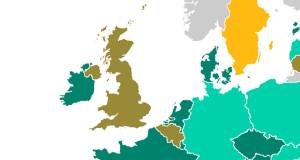 Energy poverty and electric heating
Energy poverty and electric heating -
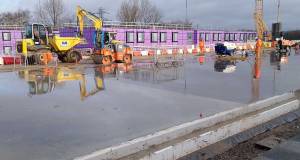 Build Homes Better updates Isoquick certification to tackle brick support challenge
Build Homes Better updates Isoquick certification to tackle brick support challenge -
 Flat earth
Flat earth -
 Material matters - A palette for a vulnerable planet
Material matters - A palette for a vulnerable planet -
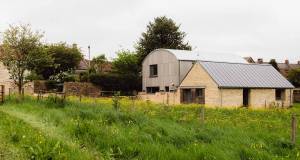 Derelict to dream home
Derelict to dream home -
 Final opportunity for construction professionals to secure 80 per cent training subsidies
Final opportunity for construction professionals to secure 80 per cent training subsidies -
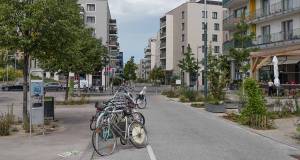 Big picture - Points of access to resilient living
Big picture - Points of access to resilient living -
 Storm breaker
Storm breaker -
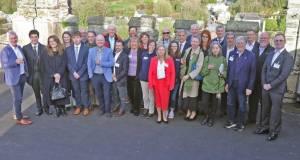 Enniscorthy to host ‘make or break’ sustainable building summit
Enniscorthy to host ‘make or break’ sustainable building summit -
 Ecocem executive John Reddy becomes the first Irish President of the Institute of Concrete Technology
Ecocem executive John Reddy becomes the first Irish President of the Institute of Concrete Technology -
 Reimagining the architect
Reimagining the architect

